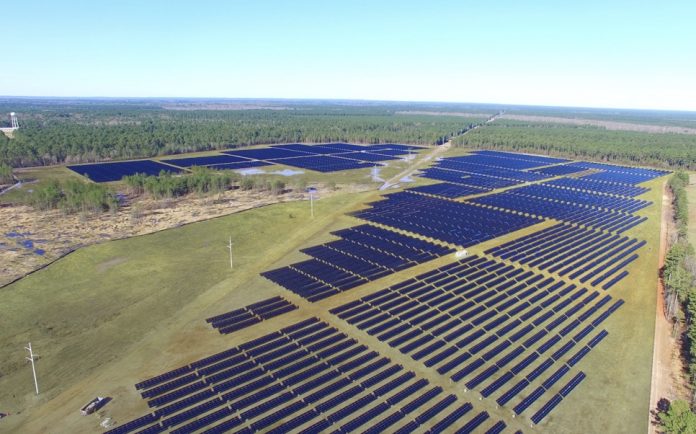US solar deployment reached a record high in 2021, but with volatile commodity prices and supply chain uncertainty leading to project delays and cancellations, utility-scale additions are set to contract this year.
That is according to the latest edition of the US Solar Market Insight report, jointly published today by the Solar Energy Industries Association (SEIA) and analyst firm Wood Mackenzie, which found that despite elevated commodity prices, higher freight costs and shipping delays, a record 23.6GWdc of solar was added in the US last year, a 19% increase on 2020.
Although the utility-scale segment reached unprecedented growth in 2021, with 17GWdc of new capacity installed, utility-scale additions are expected to fall by 14% this year, thanks to a combination of project cancellations and delays from 2022 to 2023.
For the 2022 pipeline, developers are said to have postponed at least 8% of planned utility-scale capacity to 2023 or later and cancelled at least 5%. As supply chains continue to face backlogs and delays, Wood Mackenzie said it remains conservative about equipment supply availability.
However, the report said that these headwinds are unlikely to outweigh demand for the utility-scale solar segment in the long run, with efforts to expand federal clean energy support and new procurement strategies contributing to an industry recovery in 2023.
The US solar industry remains hopeful that numerous clean energy provisions included in the Build Back Better (BBB) Act will make their way into final legislation, the research said, with passage of an investment tax credit (ITC) extension and other clean energy provisions being a significant solar market catalyst, increasing installations by 66% in the next decade over the base case.
Under a scenario in which the solar ITC is extended, 10-year forecasts for the residential, non-residential (commercial and community solar) and utility-scale solar sectors would increase by 20%, 15%, and 86%, respectively. In addition, if the manufacturing tax credits included in BBB move forward, the industry could unlock nearly 20GW of new domestic solar manufacturing capacity, the research suggested.
Without policy action in Congress, Wood Mackenzie projects that US solar capacity would only reach 39% of what is needed to hit President Biden’s 2035 decarbonisation target.
In the face of global supply uncertainty, the US “must ramp up clean energy production and eliminate our reliance on hostile nations for our energy needs”, said SEIA CEO Abigail Ross Hopper. “Policymakers have the answers right in front of them: if we pass a long-term extension of the solar investment tax credit and invest in US manufacturing, solar installations will increase by 66% over the next decade, and our nation will be safer because of it.”
‘A year of increasing costs’
Despite record-breaking install figures last year, utility-scale solar deployment was 3GW lower than previously expected due to supply chain constraints, logistics challenges and trade headwinds, according to the report, which said “multiple gigawatts” of projects pushed their online dates from 2021 to 2022 or later.
Describing 2021 as “a year of increasing costs” for the solar industry, SEIA and Wood Mackenzie’s research found that year-over-year price increases for utility-scale PV reached 18% for fixed-tilt projects and 14.2% for single-axis tracking projects in Q4.
Average system prices continue to increase due to rising equipment costs, raw material input and freight costs, as well as labour shortages, the report said. Prices for commercial and utility fixed-tilt projects are rising as manufacturers pass the cost of increased raw materials to the end-user.
The growth of the utility single-axis tracker market has led to increased adoption of bifacial and large format modules, which is said to partially offset other price increases through system efficiencies.
In terms of deployment in other market segments, residential solar additions jumped 30% year-on-year to 4.2GWdc, a new record, as more than 500,000 systems were installed in the country for the first time.
Wood Mackenzie said that while industry players continue to experience tight module availability, it forecasts 13% growth for residential solar in 2022, with upside if installers start to see supply chain relief.
Supply chain constraints and interconnection delays meant 2021 commercial solar additions were flat year-on-year at 1,435MWdc, while community solar volumes reached 957MW, a 7% increase on 2020.
US utility-scale solar additions to fall this year due to volatile prices, supply chain issues
A record 23.6GWdc of solar was added in the US last year.
Source:PVTECH
ViaJules Scully






